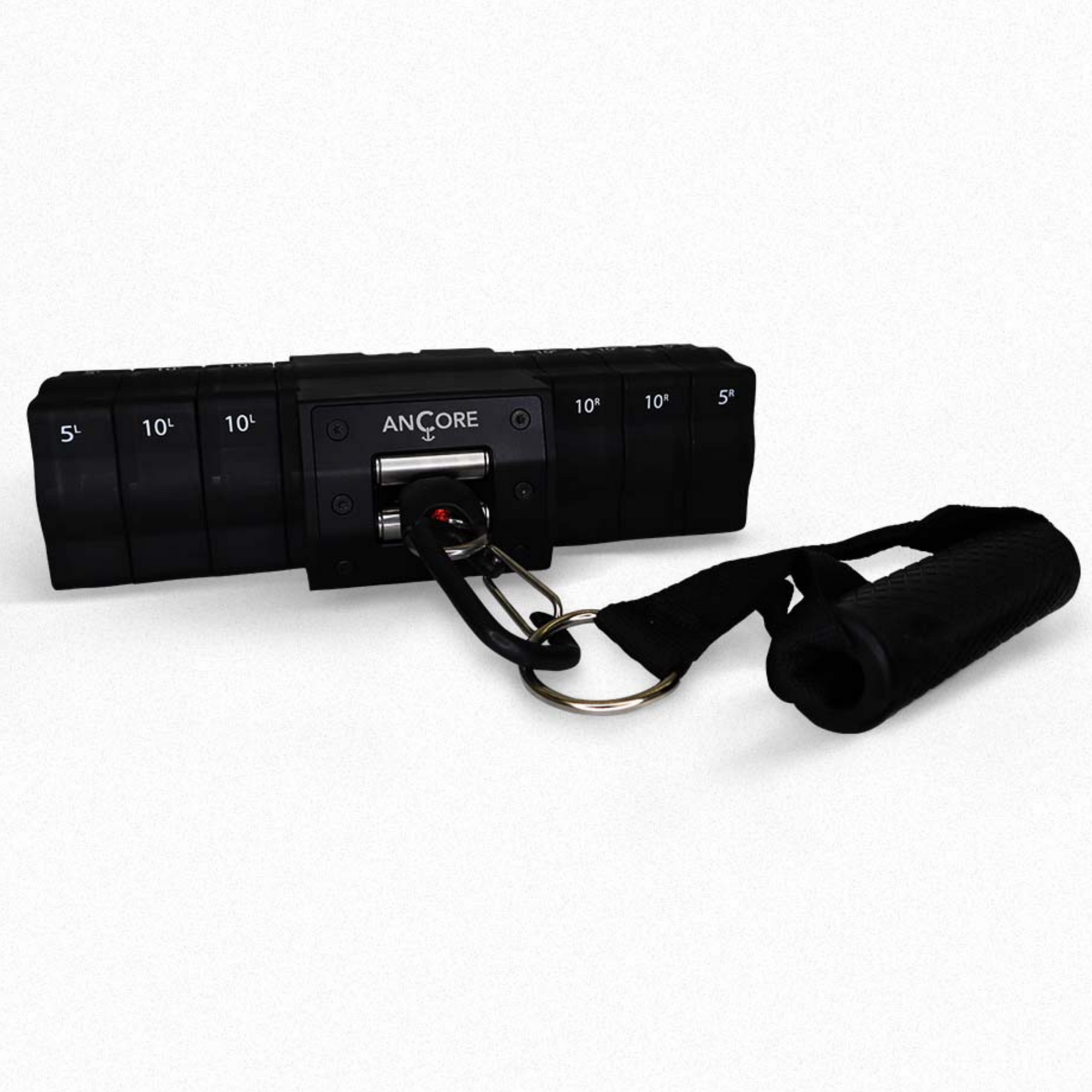Building a home gym gym that can rival the big box club down the street is easier than ever. Dumbbells, barbells, weights, and more are all easy to track down, and as long as you have a bit of space, you can cobble together solutions to just about everything without spending a ton of dough.
The one exception: cable machines. Due to both space and budget constraints, finding a good home option to serve as a cable machine (or at least a proper substitute) is still exceedingly difficult. You can either afford to install the real deal at home, or you miss out on that particular type of training as you work to make resistance bands serve as a substitute.
That said, gym gear makers have noticed this need, and there are new solutions hitting the market. These include Ancore, a company that offers a relatively small and unobtrusive solution to your home cable training problem. David Otey, C.S.C.S., an MH Advisory Board member and trainer, took one of Ancore’s rigs through its paces to see how it compares to a cable machine—and if it holds up to the exacting MH Strong standards.
Ancore Quick Facts
●Up to 65 pounds of resistance
●Small package
●Multiple handles and grips
●Multiple attachment options
●Starting at $649 for Pro models
Ancore Portable Cable Machine Positives
After testing the Ancore via his own training and with clients, Otey found quite a few things to like about the experience.
Lightweight, Portable Design
Otey loved that the Ancore system can easily fit in a gym bag and move from one setting to another, a valuable feature for home gyms and traveling trainers.
Built for Explosive Reps
For Otey, the Ancore actually has a leg up on more traditional cable systems because it’s easier to use for explosive exercises.
More Affordable Than Other Cable Setups
The Ancore system isn’t cheap at $649. That said, it’s much less expensive than comparable options, which often start well beyond $1,000. You can’t mimic the same effect with resistance bands, so it’s not even a true comp.
Ancore Portable Cable Machine Negatives
No piece of gear is totally perfect. Here’s what Otey found lacking in the Ancore unit he tested.
Low Max Capacity
As useful as the Ancore system is, it maxes out at 65 pounds of resistance. Once you top out, you’ll either have to get another unit or find new gear.
Slow Shifting
Otey found that adding weight could be tricky, and removing weight could be a hassle as all blocks usually need to be removed at once. This can make cycling through workouts or doing things like drop sets slower than you might like.
All Parts Are Ancore-Specific
Otey would have liked it if you could use other gear from your home gym setup to supplement the Ancore system, but that’s not an option. That limits what you can do to add resistance.
Who Might Like the Ancore System
Overall, Otey thinks that Ancore is great for athletes and people who want a low-footprint option for a resistance workout. That said, this might not be the best for bodybuilders who really want the exact same experience they’ll have in the gym. You’ll need to buy the real thing for that.
Overall, if you want to hone your power and work within any type of environment, the Ancore is a solid option.
Brett Williams, a fitness editor at Men’s Health, is a NASM-CPT certified trainer and former pro football player and tech reporter who splits his workout time between strength and conditioning training, martial arts, and running. You can find his work elsewhere at Mashable, Thrillist, and other outlets.



Comments are closed.